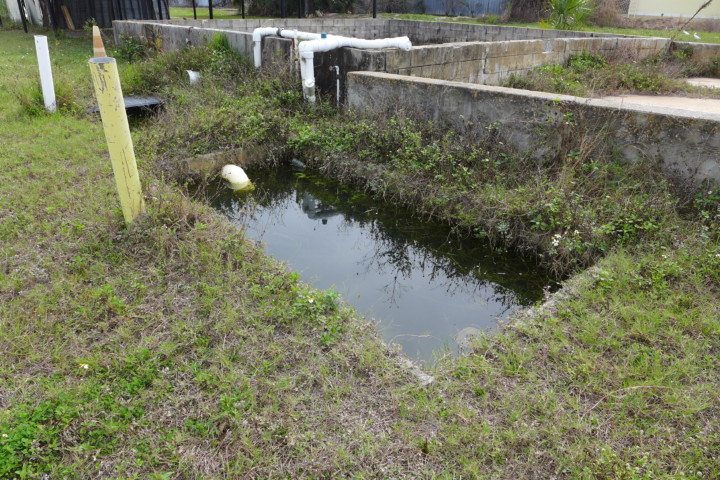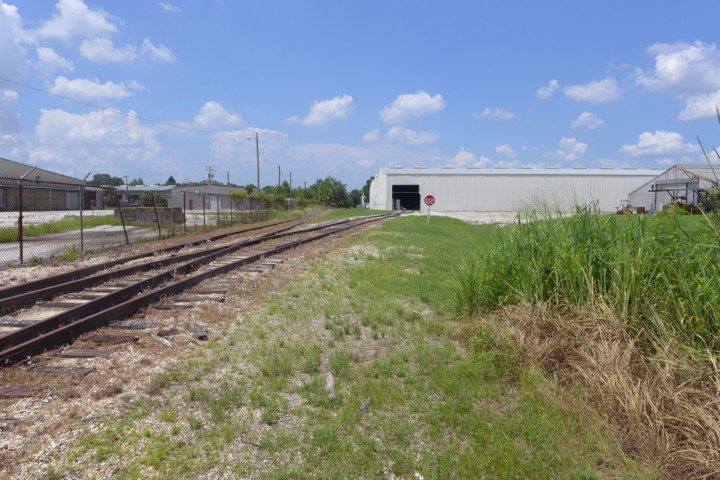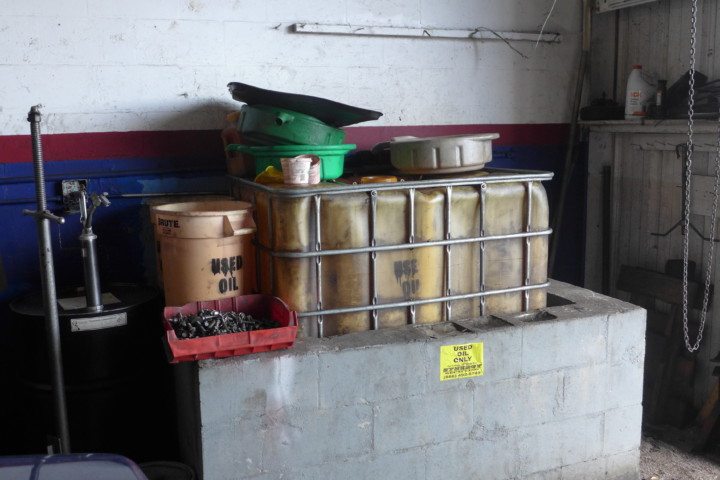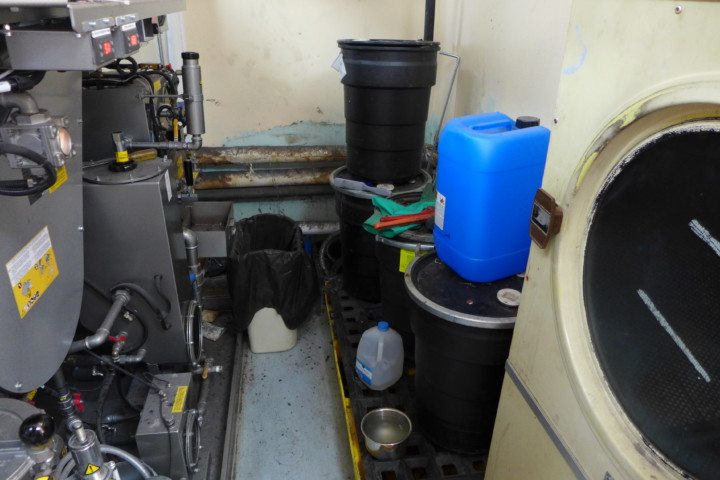What are the likely RECs at septic tank companies?
While the contamination issues can be unsavory with these companies, they’re not normally as acute as say fuel tank locations or activities involving chlorinated solvents. But we’ve found that these businesses are vagabonds when it comes to having a respectable place to headquarter, mainly since they are notorious for bringing the contents of septic tanks back to the shop in their vacuum trucks without a place for proper disposal. We’ve also found that if a company’s less than honorable, a vacuum truck can be used to resolve any number of distasteful issues “below the radar,” from overflowing waste oil tanks to bilges of tankers at the port to grease vats. Not that legitimate recovery services can’t be acquired for these purposes, but an enterprising septic tank company can gravitate to them to produce additional income. To the customer it’s out-of-sight, out-of-mind. To the vacuum truck owner, it’s now where do I put this stuff? Normally it gets put in with the rest of the wastes collected, or illicitly disposed on-site or in an undisclosed location. LAS uncovered proof of a company in this business dispatching its truck to a remote rural area for this exact purpose. The other issue is stockpiling soils from drainfields and concrete debris at the home office. From these brief accounts, it’s obvious this can be a nasty business. But as noted, the more traditional contamination impacts are generated by fueling and repairing a fleet of trucks. Since we haven’t observed a septic company in a high-rent district, these activities are normally conducted on bare soil. Now we’ve encountered “salt-of-the-earth” owners who are above board. But approach these sites with your eyes open. And oh yes, the “go to” treatment of sewage-related wastes is with lime.
What are the likely RECs at railways?
There was a time when railroad tracks were everywhere. Just look at old fire insurance maps. Just the other day, we assessed a site in downtown Tampa next to a street with embedded railroad tracks more than 120-year old, and they’re still active. Be on the lookout for old railways that have been dismantled, some for now healthy uses as bike trails. The contamination risks from railroad activity are spills from the engines, results of previous derailments, leaks of whatever is being hauled in a particular area, e.g. chemicals, fuel, etc., and herbicide treatment. An old timer recently recalled for us the spraying of the tracks for weeds off the back of a railcar. The older this practice is, the more likely arsenic was used. Be also on the lookout for now out-of-service railroad spurs that are not obvious to the naked eye. Tell-tale signs are buildings near railroad tracks with loading areas running parallel to the tracks. It’s also wise to have vegetation cut at sites where there may have been a spur. Recently, we found a spur leading to our property in the weeds, and sure enough, we had arsenic soil contamination. Another contaminant to look for on or near the tracks are PCB’s. From a practical standpoint, the farther you are from the tracks the less the risks. Outside of a spill adjacent to your property, accumulation of leaked contaminants over time is the issue. Normally, an incident with a railcar or rail line with be publicized, and a spill will be documented on ERNS. But don’t count on it.
What are the likely RECs at auto repair shops?
First, these facilities always look worse than they really are. No amount of tidying up can address the inevitable oil stains and waste oil collection areas. If money was no object you could set up your shop like a Porsche factory and have your technicians wearing jumpsuits working on sealed floors.
It’s critical to assess pathways to groundwater and soil and go from there. There is significant potential for harm given time in operation and housekeeping practices. In the old days, given enough land, on-site used oil pits or dumps were prominent, so a site historically used for auto repair must be checked for this potential. Don’t stop at just chemical analysis for just petroleum products. Our firm encountered massive chlorinated solvent contamination in a used oil pit active in the brief time perc was the parts cleaning solvent of choice.
In reality, many repair operations are in old gas stations or industrial areas, compounding the risks.
Look for obvious pathways to the soil and groundwater of the site, including septic tank drainfields.
You’ll see parts washers with solvent reservoir, waste oil drums or tank (could be underground), new oil supplies, waste antifreeze, soiled rags, waste batteries, used brake parts, and hydraulic oil reservoirs for hydraulic lifts (if underground, these can cause soil contamination and require specialized removal).
Consider how long auto repair was conducted on-site. The more contemporary, the more active the regulators have been, with keen focus on waste oil practices. Still these operations can get away with murder. Out of sight, out of mind. Many facilities haven’t ever been inspected by federal or state authorities. Too many shops. Too few inspectors.
Always check the shop bathrooms, the condition of sinks and toilets, especially if the shop is on septic tank.
All shops need air compressors. These notoriously leak out oil. This is not a material issue normally, but it can be.
Test soils at least for EPA method 8260 full list, 8270 (polycyclic aromatic hydrocarbons), TRPH (petroleum range organics) and at least for arsenic, cadmium, chromium and lead. A general shallow groundwater test can allow you to work backwards, i.e. if the water’s clean, there’s less likely the chance of massive soil impacts.
If the business can produce proof that it recycles and recovers, and housekeeping is good when you arrive (I suggest surprise, last minute site visits), then you might begin to think that your risks may not be unmanageable.
It is possible to give an auto repair shop a clean bill of health, but this is quite rare.
What are the likely RECs at dry cleaning facilities?
Dry cleaning using chlorinated solvents such as perchloroethylene can cause significant soil and groundwater contamination that is extremely problematic to remediate. With increasing environmental awareness and regulation, dry cleaning has become “cleaner” with the use of hydrocarbon-based solvents and “dry to dry” machines. Also, the volume of solvent used in the process has dramatically been reduced, from many drums to perhaps a small drum. Nevertheless, an environmental site assessment will need to address many angles to avoid calling this kind of site activity anything but a REC.
One easy way to get into the clear is to establish, without a doubt, that dry cleaner is and has always been a “drop off” only store, meaning a centralized plant is used, and the clothes are shipped back and forth. Still these “drop off” stores will have “perc” on hand for spot cleaning, but certainly not at a material level.
Why are chlorinated solvents so evil? The layman’s explanation is that they are heavier than water, and they sink rather than float on the surface of the groundwater water. As such, they can penetrate through concrete surfaces and any conduit in a floor (e.g. seams, bolts, etc.) and the base materials below. From there it will normally proceed straight down until it meets resistance such as clay or rock. Over time it will dissolve into the groundwater, but it can stay in its non-liquid state for a long time. If it penetrates lower into the rock containing the drinking water aquifer, it can contaminate that too, and can be present in two aquifers at one time, flowing in different directions. Therefore, its incumbent upon the assessor to do his or her homework.
In Florida, dry cleaner registration commenced in the 1990s, and applications were made into the state’s dry cleaning solvent cleanup program. Eligibility into the program was based on confirmed contamination, soil or groundwater, usually determined by performing soil and groundwater sampling and chemical testing inside the structure next to the dry cleaning machine and outside the building next to the back door of the facility. In 1998 this popular program closed. The state is slowly cleaning up these facilities on a priority basis. There are many considerations to taking title to or lending against a cleaner in the program even if eligible for state cleanup, i.e. future marketability of site.
Generally, the presence of a dry cleaner, or the past presence of a facility, requires serious assessment and research to determine if the cleaner was indeed a plant, if it operated at a time when a “wet” process was used to change from washing to drying machines, if perc was used in the process, if it operated at a time when significant volumes of solvent were required on the premises, if non-chlorinated solvents were used such as Stoddard chemicals requiring an expansion of testing parameters, and/or if the facility is in a cleanup program and stands a chance of ever being cleaned up based on its priority ranking. Regardless, you’ll end up needing to perform the same kind of soil and groundwater testing that you’d have to perform to get into the cleanup program (inside and outside) in days gone by, using EPA methods 8260 and 8270.
Practically and realistically, during the “due diligence” phase of a transaction, don’t count on the owner wanting to be invaded for a core through his or her concrete floor. You may have to find a location outside near the dry cleaning machines. In this case, any faint detection of a chlorination solvent should be considered material, since the solvent normally migrates straight down and only a limited amount of dissolution has occurred.
In your drilling, certainly do not drill into or through rock. This will enable the solvents to penetrate even deeper. This is obviously not good.
There are many exotic remediation methods to address chlorinated solvent contamination, but the simplest and sometimes the most effective is to remove the source, i.e. excavate. Again this may be problematic with a viable business in place.
It’s also important to understand that chlorinated solvents are used in other applications with the same ramifications. For example, a printing business will likely use the solvent to wipe down its machines.




